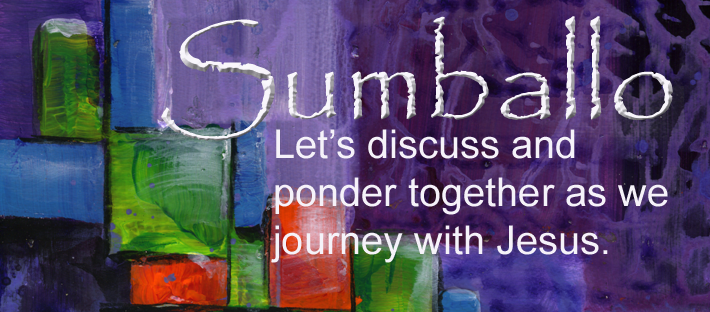Monday, November 9, 2009
New resource
If you'd like to expand your library, go take a look.
Saturday, October 20, 2007
Retreat in a Box!
Tuesday, September 11, 2007
Dive In: Commentaries

I was only 17 at the time, so the meetings were welcome. All the Sunday school teachers gathered every other week while our pastor taught us the lesson we were to teach to our children. I had 5-year-olds and didn’t want them infected with wrong doctrine.
Today, my feelings about those meetings are a bit mixed. They were helpful to me as a young teacher but the more experienced teachers refused to do any study on their own. Their preparation consisted of repeating what the pastor told them.
We do the same thing with our Bible study when the first resource we pick up is a commentary. I have challenged you to read-read-read your Bible and to examine with care, noticing detail and also trying to discern the big picture.
A commentary should be one of the last books you pick up as you dive into the text. Commentaries are written by people who, in spite of their labor, cannot help bias and limitation. No commentary can fully capture the meaning of any text.
Add in to that that biblical scholarship continues to develop. New discoveries have added depth to biblical understanding. The Dead Sea Scrolls have added great richness to biblical scholarship, for example, because old texts were discovered, allowing translators to better discern word usage and syntax of first century writings.
For centuries, biblical scholarship tried to explain the lack of archeological evidence for the Assyrian nation. Many assumed it had not existed but then an ancient Nineveh was discovered. Discoveries help us better plumb biblical meaning.
All this to say that older commentaries are somewhat limited. They didn’t have the benefit of the Dead Sea Scrolls and archaeological finds. They worked with the knowledge of their day and they have very helpful insights. But don’t rest your analysis of a text on ancient commentaries alone.
Just like reading different translations of the Bible helps reveal meaning, reading more than one commentary helps produce a balanced presentation.
I will make some recommendations. Please know these are not inexpensive books. You may never own the entire set of them. I try to buy a text as I study a particular book, depending on financial resources. However, these will enrich your study.
My favorite commentary is The New American Commentary from Holman Press. It is evangelical and conservative, scholarly and deeply steeped in Hebrew and Greek research. Each volume is $20-$30 new. I’ve found used volumes for less.
Another suggestion is New Testament Commentary by Baker Press. It is from a Reformed standpoint. It is written by two authors so isn’t quite as consistent as the NAC, but still a valuable commentary.
Some helpful scholarly authors are: F.F. Bruce, Ben Witherington, Howard Marshall, Douglas Moo, Leon Morris, Craig Blomberg, Walter Brueggemann, Brevard Childs. This is a very limited list, but it might give you a foothold into further study.
Often you can find articles on the internet by these authors.
My basic tools for Diving In are several translations of the Bible, the Dictionary of Biblical Imagery, a good atlas (we’ll look at those another time), and The New American Commentary.
First, study the details of the biblical text, noticing its design and provenance. Try to discover the author’s point to his original audience and see if that idea still resonates today. THEN dig out commentaries to see if others agree with your analysis. If no one has seen what you’ve seen, maybe you’ve better go back to the text and do some more digging. Use a commentary as sort of a answer sheet to check your work, not the place to begin.
Don’t just repeat what a commentary tells you. Dive in and drink the text for yourself. You’ll be revived and renewed by what you discover.
Tuesday, August 14, 2007
Dive In: Resources I

Your bookshelf is now going to be front and center in our discussion. You may wonder what my delay has been.
In diving deeper in the Bible, the first text you have to use is the Bible. You have to read it, ask questions, see patterns, look for the context and big picture. You have to begin to identify the design of the pericope. Several translations are very helpful.
The second thing you should open, after a Bible, is not a commentary. Commentaries are written by scholars with bias. They can’t help it, any more than you can help your bias. Commentaries are often helpful but never the final word. There is no commentary that can replace thoughtful reading of the biblical text. (We'll discuss them more later because I have some specific advice for them.)
In fact, the first extra-biblical text I’d suggest for your bookshelf is a good Bible dictionary. Don’t buy the two-nine-five paperback at the grocery store. Save up some money, ask for it as a birthday gift, have a yard sale. Do what it takes (short of breaking the law or selling a child) to get a good dictionary
Here are my suggestions for a helpful Bible dictionary:
Dictionary of Biblical Imagery. Edited by Leland Ryken, Jim Wilhoit, Tremper Longman, Colin Duriez, Douglas Penney and Daniel G. Reid. Downers Grove: InterVarsity, 1998.
Dictionary of Biblical Interpretation. Edited by John H. Hayes. 2 vols. Nashville: Abingdon, 1999.
Eerdmans Dictionary of the Bible. Edited by David Noel Freedman, Allen C. Myers and Astrid B. Beck. Grand Rapids: Eerdmans, 2000.
HarperCollins Bible Dictionary. Edited by Paul J. Achtemeier. Rev. ed. San Francisco: HarperSanFrancisco, 1996.
Holman Bible Dictionary. Edited by Trent C. Butler. Nashville: Holman, 1991.
International Standard Bible Encyclopedia. Edited by Geoffrey W. Bromiley. 4 vols. Grand Rapids: Eerdmans, 1995. (ISBE)
Remember: always always always read a reference book like you eat a fish: keep the meat and spit out the bones. There are no perfect reference materials. You may be biased or the author may be biased, but the final word comes from the Bible. What does the Bible say about a particular topic?
Dictionaries are helpful in showing us cultural background and context, reminding us of locales and genealogies, identifying people and history. I like to keep one close when I’m reading.
My favorite book in the above list is the Dictionary of Biblical Imagery, although I use it together with the ISBE.
Here’s an example of the help I get from the DBI.
I’ve been puzzling over the Sodom and Gomorrah account. Here’s something I read that gave me a toehold on meaning:
The contrasting of Lot and Sodom with Abraham is highlighted by parallels in the hospitality extended toward the divine messengers (Gen 18:1-8, 19:1-3). But the story in Genesis 19 quickly degenerates into a spiral of sin. The attempt at sexual violation by the entire male population, the offer of Lot’s daughters in the messengers' stead, the mocking of his future sons-in-laws, Lot’s hesitation to leave Sodom and his plea not to have to flee far away, and the fateful backward glance of his wife fill out this portrait of rejection of God’s ways (Gen 19:4-26). All Abraham sees afterward is the smoke of the judgment (Gen 19:27-28).
—Dictionary of Biblical Imagery
Suddenly I was comparing Gen 18 and Gen 19, looking for parallels and for contrasts. The dictionary didn’t give me the meaning, but helped provide information to pry loose the intent of the author. It’s a resource that helps me see comparisons across time and history when I might otherwise miss them.
Another entry tells me that salt is a sign of barrenness or sterility. Lot’s wife becomes a pillar of salt, although she had earlier had children, while Abraham’s wife, who earlier was without child, became the mother of the nation. That certainly gives traction to some ideas in the text.
Would you tell me what dictionary you like and use? Or what other resources you’d like me to discuss in coming weeks?
Keep reading and diving in.
Friday, May 25, 2007
E-mail updates
Friday, May 18, 2007
Respect

Hot and cold. Mars and Venus. Reason and emotion. From the time Tommy in the third grade slugged us because he liked us, we have been trying to understand men and women.
I’m reading Love and Respect: The Love She Most Desires, the Respect He Desperately Needs by Dr. Emerson Eggerichs. (Why do authors need to reveal their whole book in the title?)
The idea is that women desire love while men need respect. Women give love because they value it so much, while men long for respect. Ephesians 5:33 suggests the same concept and Eggerichs claims we have gone a long way in nurturing love in marriages but not respect.
Women withhold respect when they’re not feeling love while men withhold love when they don’t feel respected. Eggerichs calls this the Crazy Cycle and suggests that the one most mature in the relationship needs to break the cycle and give what they are not yet receiving, trusting that eventually they will receive what they need.
This book is a fast read. Eggerichs repeats his concept in many different ways. I was torn, as I read, between telling him (do you ever talk to books and authors?) that I GOT IT and wondering if I would ever get it.
He has a website (of course). Ignore the froth and dig into the meat.
Let me know what you think.
Thursday, March 22, 2007
World blog
It is available online, un-squirrelable and ready for reading.
World also has an interesting, thought-provoking blog with daily posts. There is a lot of discussion, various viewpoints, and all sorts of news pieces. If you post a comment, you have to let me know!














![[bzrzvec.jpg]](https://blogger.googleusercontent.com/img/b/R29vZ2xl/AVvXsEhPfGK2ZswVhbDSxYZtHnwD38RHsuspM_4Al05ojNaMmr9vpaAHea7rNYzt2HLRptMEYIGhO2DNLJKeEFWH5pb7QFePF-XF8oShx8rJ5f1cyG7ZVqT3bVwK7Vb3UEH9t-0GoVmB-QdqDYU/s1600/bzrzvec.jpg)




